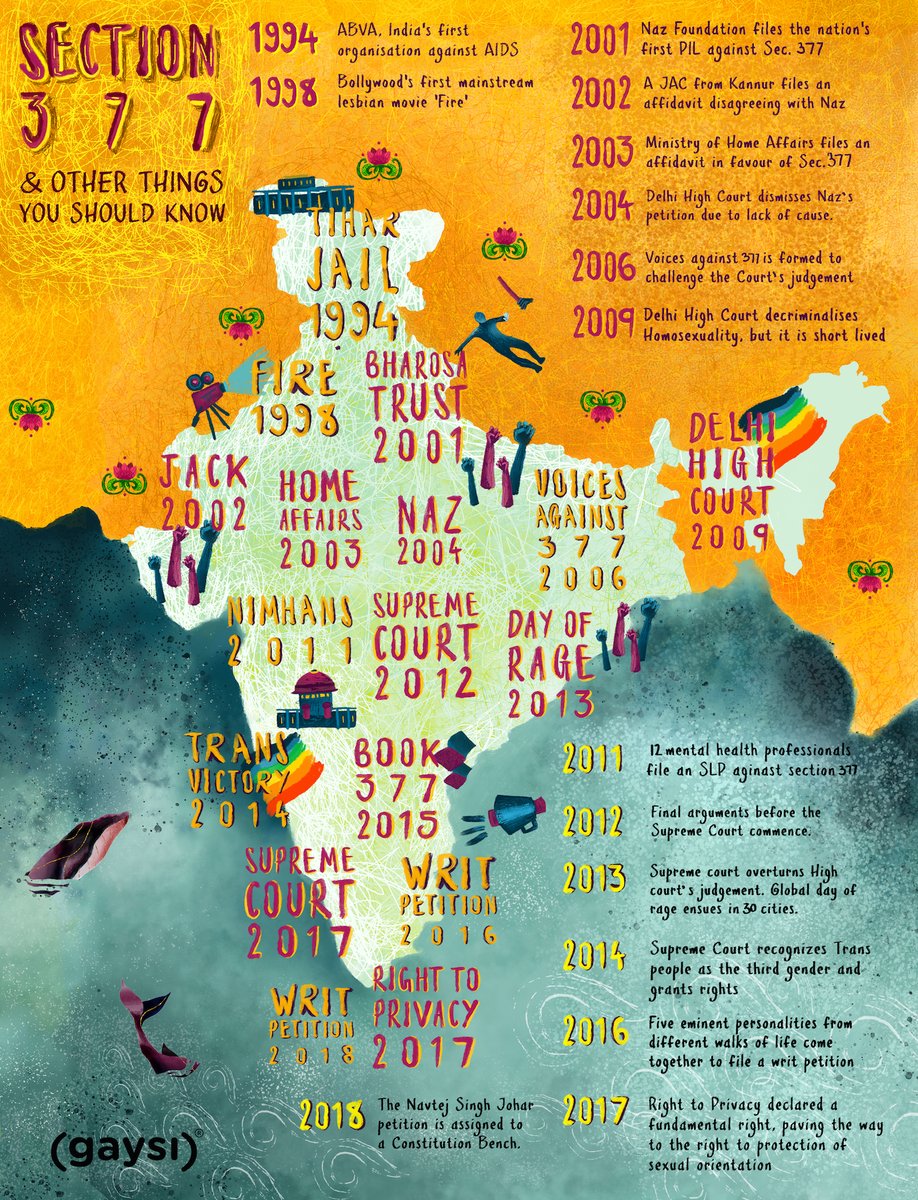
One of the sweetest starts to pride month 2018 was Imaan Sheikh’s Twitter thread re-imagining Kuch Kuch Hota Hai (KKHH) as a queer love story – easily done by erasing Shah Rukh Khan’s character altogether.
KKHH is an iconic Karan Johar 90’s feel-good movie and has remained one of my personal favourites through babyhood and counting. And despite the known love triangle, seeing Kajol’s Anjali and Rani Mukherjee’s Tina as secret queer crushes was the cutest thing, and it just made so much sense! I had to believe it to be true, and so did the Twitterverse.

Image credit: Twitter
Queering known narratives in the arts, especially in film, is a popular way of introducing sexual and gender orientations apart from the same-old heterosexual ones to the mainstream. It introduces the whole spectrum of gender and sexuality in our everyday.

Image credit: Twitter
Queer erasure in the media space is something hotly contested, and with more queer films and books coming out, we are slowly un-learning heterosexual love as the norm.
I think this thread was so appreciated, not just because (most) people love KKHH but also because it showed us what respectful, wholesome representation could look like in popular Indian cinema. It showed people of the community in particular that they can belong in mainstream narratives. The ideas of representation and community make up the foundation of pride, and queer KKHH sent a specific message of increasing inclusivity.

Image credit: Twitter
“To celebrate and mourn is not an oppositional project,” says Alok Vaid-Menon, a trans person of colour (POC) and artist, during a live video on his Instagram.
Queer politics and the very real dangers faced by people of the LGBTQ+ community across the world are often undercut to focus on the month-long celebration. Back to Vaid-Menon’s point, is it possible to celebrate progress yet also mourn the blatant human rights abuses that still continue towards people in the community?

Credit: Alok Vaid-Menon’s Facebook
There is inherent power (and joy) in subverting the dominant idea of love, and in just letting go for a month and being happy in a time and space when happiness and freedom are often unattainable if you are not a cis heterosexual person.
But to just have fun and not interact with the larger cultural landscape, might be to ignore the very political, racial and radical beginnings of pride. With Marsha P. Johnson and Sylvia Rivera, black and brown trans women, throwing the first stones in1969 at exclusionary white gay clubs, pride has always been about race and multiple, intersecting identities. Pride was and is supposed to be a celebration of all genders and bodies, especially offering a safe space for the most marginalised.
In the dominant pride narrative, agency is often given only to and assumed of people at the higher rungs of society – save for their sexuality. It may be time to pick at the overwhelming centering of white superiority/upper-caste gayness in pride and recognise that pride culture was founded on the criminalisation of gender nonconforming people of colour. The narrow pride narrative is also famously exclusionary towards bi-people, asexual or others on the gender spectrum.
Of course, pride can still be a celebration, after all in a culture that dehumanises an individual’s very being, flaunting it and relishing in it is an act of rebellion. But to forget it’s roots would mean to erase the continued contributions of non-binary people of colour, and essentially erase them – like much of the mainstream does anyway, the same mainstream pride rebels against.

Credit: gaysifamily Instagram
India and pride
To most people living here, a discussion on queer politics would be incomplete without discussing colonisation and it’s remnants. The toxic colonial hangover, where queer Indians still live in the clutches of a 16th century English law (377), underscores the obvious politics of pride.
Other systematic inequalities in our society – like gender, caste, disability and class and more – often seep into LGBTQ+ groups. To be queer in India is to fight for the right of acceptance and normalisation, and to ignore other oppressions or not consider issues of access, dignity and belonging for the entire community, would be a disservice to the multitudes of disenfranchised identities within the movement.
Rajagopalan R, a queer writer and student at Indira Gandhi National Open University, Delhi, talks about the exclusionary language of pride, literally, “Language, like colour, works at many levels. A space like Delhi pride parade that’s about diversity, doesn’t put forward its protest and celebration in languages other than mostly English or Hindi. In terms of inclusivity and access, he asks, “Is Braille a part of Pride Parades?”
Of course, you can be both oppressed and oppressor, though it may be hard to acknowledge holding varying levels of privilege, especially when belonging to an oppressed group. It may also seem like pride brings to the surface only one aspect of your identity, but that’s easy to think if you belong to the dominant pride narrative of cis gay men. For others, different aspects of their identity don’t just disappear when their queerness is highlighted. And to be excluded from a community that’s already excluded from mainstream hetero-normative narratives is doubly oppressive.
Pride is inherently political – it’s about a group that’s often denied basic rights celebrating themselves, reclaiming public spaces and sticking it to oppressive colonial-heteronormative-patriarchal structures – and leaning into the politics can only help the struggle.
Leaning in doesn’t have to be drab though, and a political revolution can also include a colourful celebration.
Featured Image credit: Reuters




